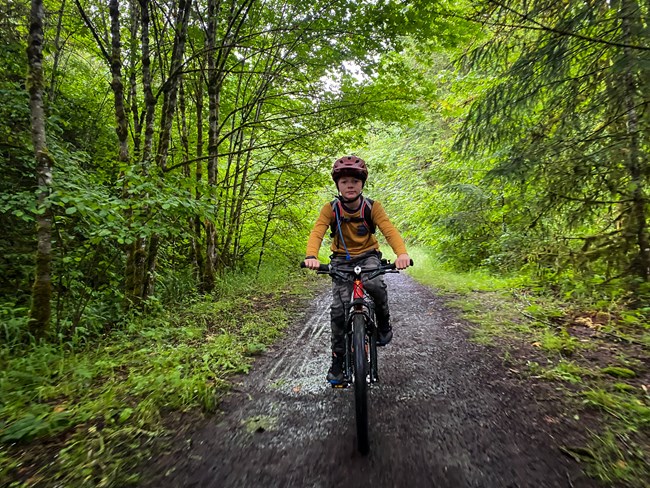Last updated: June 2, 2023
Article
Crown Zellerbach Trail

Beginning at the Nehalem Divide, one of the lowest passages across Oregon’s Coastal Range, and following the drainages of two local creeks, the Crown Zellerbach Trail connects the towns of Scappoose and Vernonia through the wetlands and forested hills along the Columbia River. The trail is managed by Columbia Country, Oregon with collaboration from the Bureau of Land Management and local partners. As of June 2023, the trail is part of the National Trails System as a national recreation trail.
The Crown Zellerbach Trail is only 20 miles from downtown Portland and 25 miles from the Portland International Airport. It provides access to recreation opportunities in urban communities and helps spread users away from more crowded areas in the region.
The gentle hills and easy topography make the trail a likely trade route between the Chinookan and Clatskanie peoples. By 1905 the trail became the obvious route for one of Oregon’s first logging operations. Chapman logging camp built the Southwest Railroad along the current trail with the purpose of hauling logs to the river where they could be easily floated to the lumber mills. In 1945 the railway was sold to the Crown Zellerbach Corporation and converted to a wide road for logging trucks.

Johnathan Maus
Today, the Crown Zellerbach Trail is a 22 mile, mostly-gravel forest path ideal for hikers, bikers, and equestrians to immerse themselves in the surrounding forest and farmland. The trail is separated into segments with many different access points so visitors can enjoy any distance. From experienced equestrians to the casual hiker to someone who is just learning how to ride a bike, any recreationist can enjoy this trail.
Recreation may be the main purpose of this trail, but there are plenty of educational opportunities also. Throughout its length, there are 23 interpretive kiosks and 60 signs that highlight why this trail is special. Whether it’s the history that ranges from Indigenous peoples, through the railroad era, to apple orchards; the rivers of molten rock and glacial floods that created the rock formations; or the local plants and wildlife, there is always something to learn about the trail.
